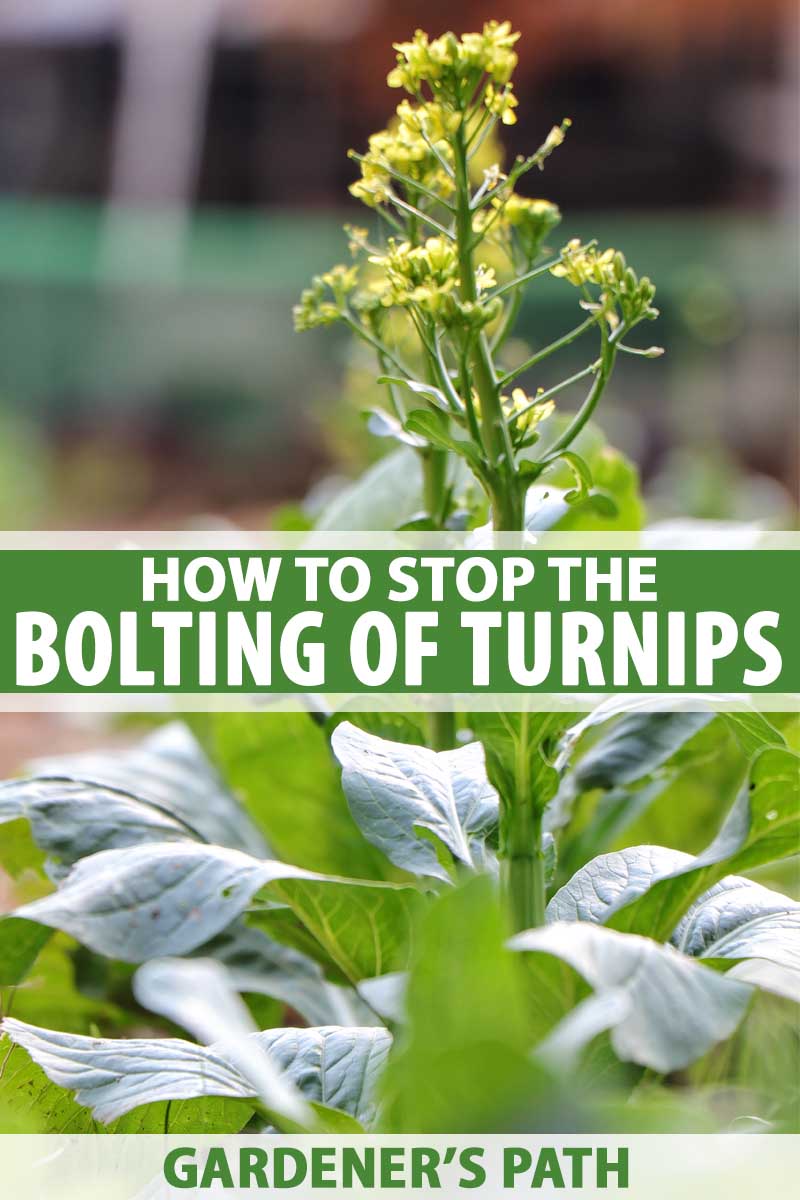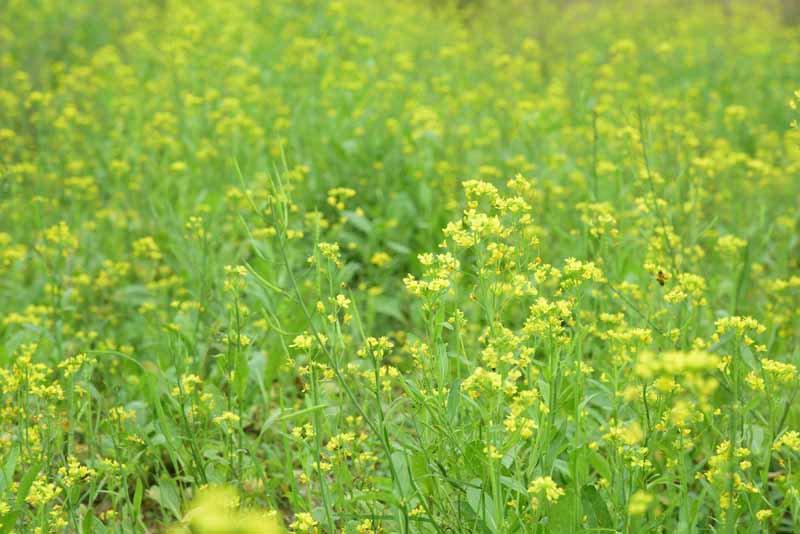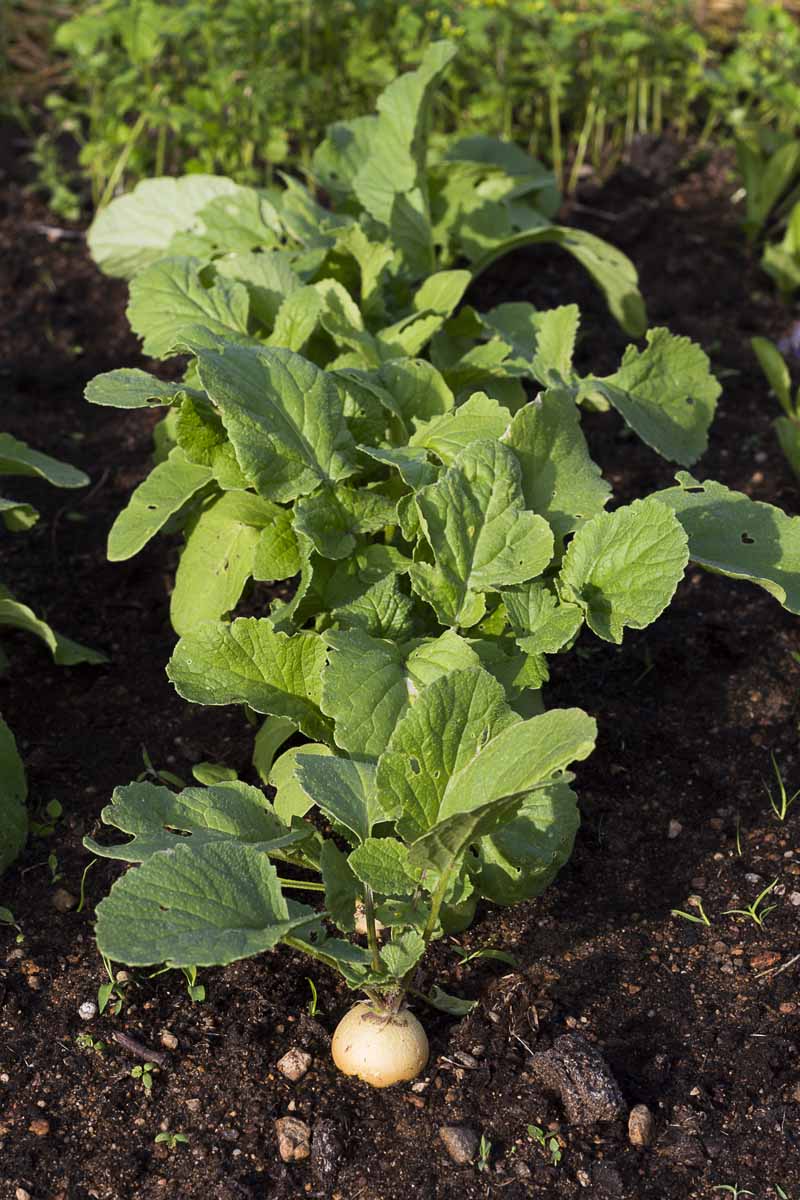While relatively low maintenance, early bolting of turnips is a common frustration among many growers. Luckily, preventing this from happening is easily doable with a few simple considerations. We link to vendors to help you find relevant products. If you buy from one of our links, we may earn a commission.
What is Bolting?
Bolting is what happens when a plant transitions its energy from leaf or root production to flowering quickly and going to seed. If you have ever grown lettuce or other leafy greens, you are probably familiar with the signs. One day your lettuce head is looking on track to grow large luscious leaves, and the next the plant has shot up a thin leggy stem, the leaves suddenly taste bitter, and soon stops producing new leaves altogether.
This can sometimes happen suddenly, causing plants to become leggy, bitter, tough, and generally unpleasant to eat. When a plant bolts, or “goes to seed,” it means that it has decided to put all of its energy into creating seeds so that it may reproduce. This physiological response often happens when a plant is stressed. Stress signals that time is short and forces it to transition all of its energy into seed production to ensure an opportunity to create new plants. Essentially, it recognizes that favorable conditions are lacking to thrive and decides to sacrifice itself for the good of the next generation. It is a basic survival mechanism. In the case of root crops, this can be a significant problem for root production. Once a turnip has bolted, roots become fibrous and inedible, and growth will slow or stop completely.
Why do Turnips Bolt?
Like many other plants, stress can trigger turnips to bolt, turning greens bitter and stunting roots. Luckily, by identifying the causes of stress, this response can be easily prevented. The key is to create a low stress environment that is easy for plants to thrive in. For brassicas, this means nutrient rich and balanced soil, consistent watering, and cool growing conditions. A major cause of stress for turnips is poor soil. Planting into soil that is deficient of nutrients can really hinder the plants’ ability to stay healthy and grow robust roots. To remedy this, take measures prior to planting to ensure your garden bed is rich in the nutrients that your crop needs to thrive. Turnips do best in soil that is rich in phosphorus and potassium. Phosphorus is an important nutrient that promotes strong root growth. It converts other nutrients into a usable form so that plant can grow strong robust. To increase phosphorus in the soil, try mixing in bone meal or rock phosphate prior to planting.
Potassium is another important nutrient that strengthens plant cells, increases vigor, and helps plants cope with environmental stressors. Wood ash is a great source of potassium. It is also free if you save the ashes from your wood stove! Additionally, you can amend nutrient deficient soils with organic matter such as compost or a bit of aged manure but be cautioned that too much nitrogen can cause roots to branch and become misshapen. Because of this, there is no need to apply repeated fertilizer after plants are in the ground. Turnips also need well drained soils and consistent water throughout growth. An inch of water per week is advised for healthy root development. At the same time, it is important to prevent soil from becoming waterlogged to prevent disease. A drip irrigation system could be a great way to provide consistent water while minimizing the risk of over watering. You can find out more about irrigation here. Tip: adding a thick layer of straw or hay mulch around plants can help keep the soil from drying out while also allowing water to drain properly. Turnips are truly a cool weather crop, and the stress caused by excessive heat can also trigger plants to form seed heads. Timing plantings earlier in the spring or growing them as a fall crop can help prevent heat induced bolting. You can also help to protect plants from overheating by planting in partial shade or by covering with shade cloth when the weather turns hot. Shade cloth comes in different thicknesses and can help control the amount of light and heat that plants receive. Try a shade cloth with a percentage of 30-40% shade. Mulching will also provide insulation to the soil, keeping soil temperatures cooler around your turnip plants. When purchasing seeds, you can also look for heat tolerant or bolt resistant varieties.
What to Do When a Turnip Goes to Seed?
Unfortunately, once a plant has gone to seed, the root will cease growth and become very woody and tough. If this occurs really early in the growth cycle, it may not have had a chance to produce much of a root at all. The greens will turn bitter and will no longer be enjoyable to eat. For harvesting purposes, your plant is essentially unusable. At this point, you have two choices. You can either pull up your plants and throw them in your compost pile or leave plants in the garden to let them self-seed. If you can afford the space to leave the roots to break down naturally in the garden, this is a good choice, as it will help build up the nutrient quality of your soil for the future, as well as loosen compacted soil. And you may even get some self-seeded turnips springing up here and there!
Don’t Stress!
Just like us, plants do best when they are not stressed. You can help your plants grow healthy and strong by reducing stress in their environment. By amending soil prior to planting, providing adequate water, and keeping plants from overheating, you can help reduce of the plants forming seed heads. As an additional benefit, reducing stress also helps to prevent other problems like pests and disease. Do you have experience with turnip plants going to seed? What methods have you used to reduce bolting? Share your advice in the comments below. And for more turnip related tips and tricks, check out some of these guides:
How to Identify, Prevent, and Treat Bacterial Leaf Spot How to Identify and Treat Turnips With Downy Mildew How to Identify and Control Black Rot Health Benefits of Turnip Greens
© Ask the Experts, LLC. ALL RIGHTS RESERVED. See our TOS for more details. Uncredited photos: Shutterstock.



